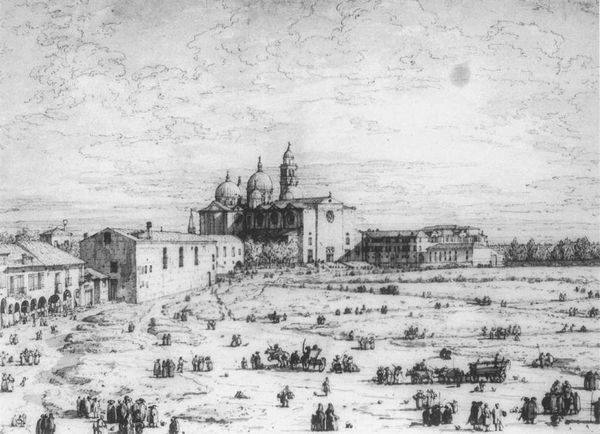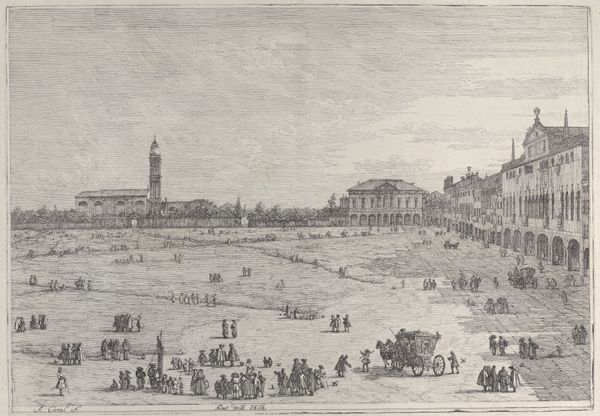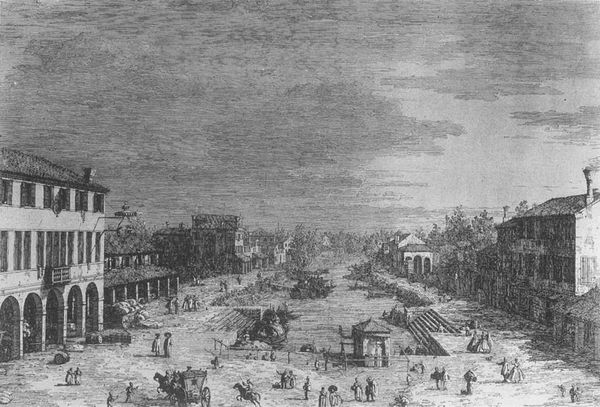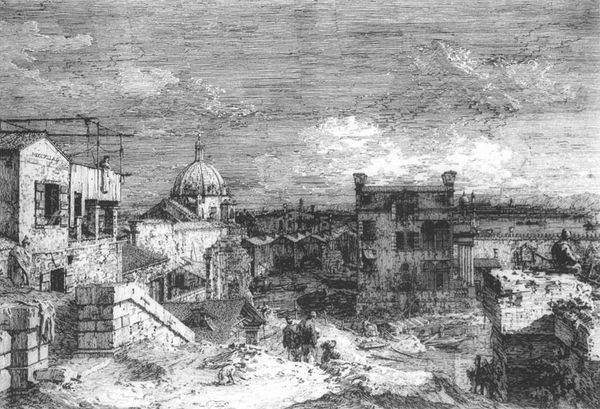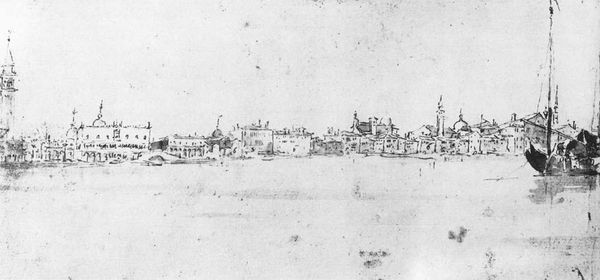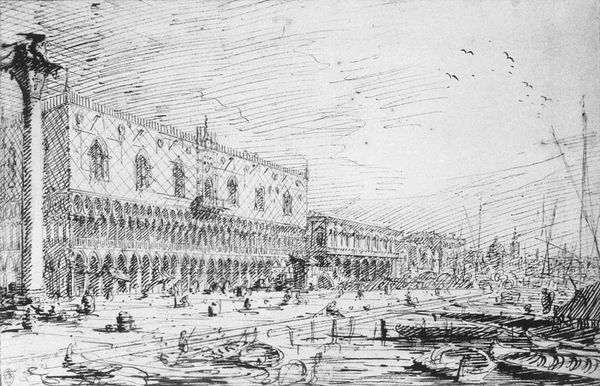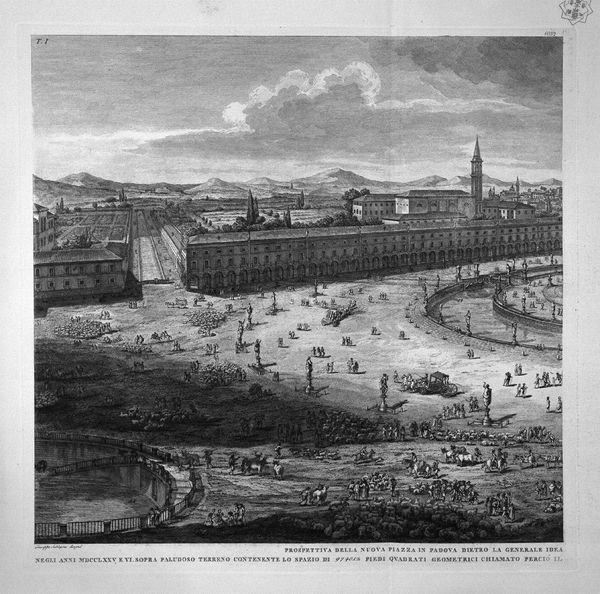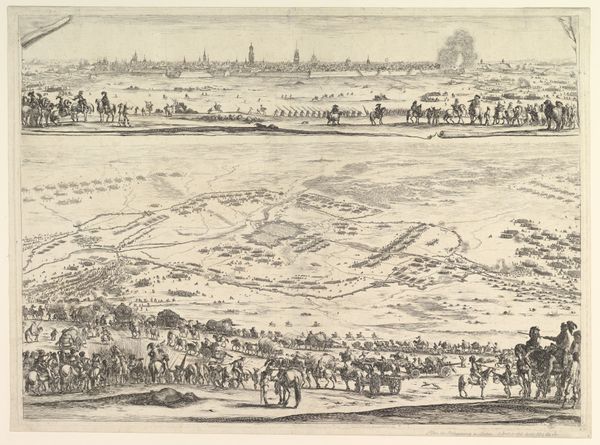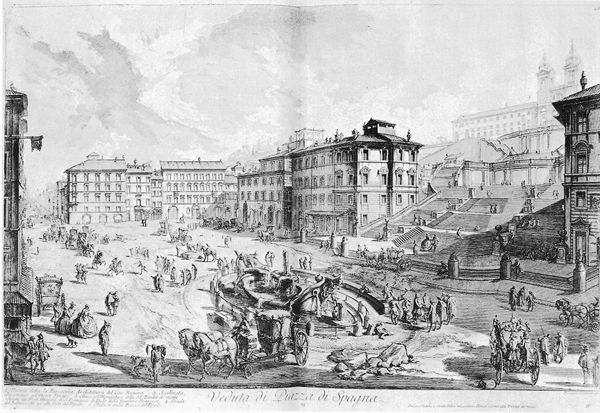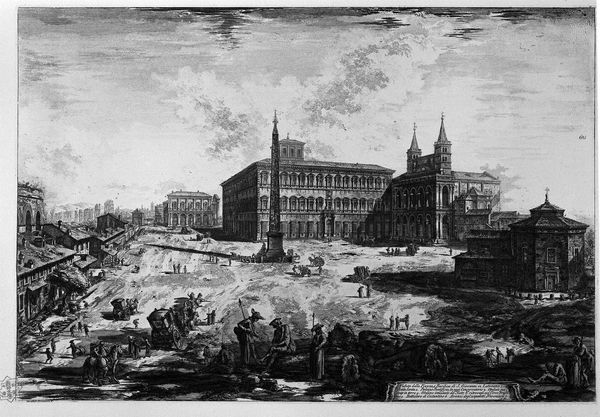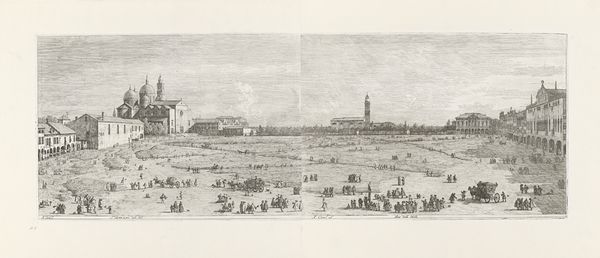
Padua: The Prato della Valle with Santa Giustinia and the Church of Misericordia 1740
0:00
0:00
drawing, paper, ink
#
drawing
#
venetian-painting
#
baroque
#
landscape
#
landscape
#
charcoal drawing
#
paper
#
ink
#
cityscape
Dimensions: 27.1 x 74.3 cm
Copyright: Public domain
Curator: This ink and charcoal drawing on paper by Canaletto from around 1740 depicts Padua's Prato della Valle, including Santa Giustinia and the Church of Misericordia. Editor: Immediately, I'm struck by its expansive emptiness. It's a city scene, certainly, but it feels almost desolate, doesn't it? Like a stage set before the players arrive. Curator: Well, consider the labor and materials that went into creating this image. The sourcing of fine paper, the production of quality ink and charcoal – these materials were costly and time-consuming to produce. This piece reflects the consumerism of Venetian society in the 18th century, portraying civic pride while glossing over socioeconomic tensions of the day. Editor: Fascinating. Though for me, it feels like looking back in time through frosted glass. It's undeniably a landscape, even a bustling city, yet the monochrome tones strip away the immediate sensory experience. I see history, not the vibrant daily life it represents. Curator: Precisely. The medium dictates the message. It's a drawing, not a painting. We aren't invited into a scene with brilliant colors to excite us, but offered something akin to blueprints to analyze Venetian engineering and urbanization efforts. Consider Canaletto's technique too – precise lines, attention to architectural detail. This was commissioned artwork of sorts, meant to serve practical as well as aesthetic ends. Editor: Yes, I see what you mean about architectural focus. I am surprised by how much information is included, rendered with so much precision with seemingly minimal material, such as ink and charcoal on paper! Also, it's funny, the more I look at the characters included in the landscape, the less alone it appears! The people seem to animate what otherwise feels vacant. Curator: Indeed, it reminds us that artworks can act as social documents, even if their purpose involves some level of idealistic vision or outright beautification of the period they portray. Editor: So true. Seeing the layers beyond a straightforward presentation makes it a bit magical. I am now experiencing it not just as a picture but also as a thought. Curator: Exactly! It’s the physicality of materials and the labor involved that make this more than just a picture; it’s a window into 18th-century Venetian culture. Editor: Thanks, I like the view.
Comments
No comments
Be the first to comment and join the conversation on the ultimate creative platform.
